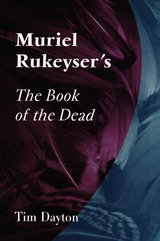2 books about Book of the dead

Journey Through the Afterlife
Ancient Egyptian Book of the Dead
John H. Taylor
Harvard University Press, 2010
The Book of the Dead is not a single text but a compilation of spells that the ancient Egyptians believed would assist them in the afterlife as they made their perilous journey toward the realm of the gods and the ultimate state of eternity. No two copies are identical. The spells are often accompanied by colored vignettes, which graphically show the imagined landscape of the Netherworld, the gods and demons whom the deceased will meet, and the critical “weighing of the heart”—the judgment that will determine whether the traveler will be admitted into the afterlife or condemned to destruction by the monstrous “Devourer.”With contributions from leading scholars and detailed catalog entries that interpret the spells and painted scenes, this fascinating and important book affords a greater understanding of ancient Egyptian belief systems and poignantly reveals the hopes and fears of mortal man about the “world” beyond death. The whole is beautifully illustrated with specially commissioned photographs of these exceptional papyri and an array of contextual funerary objects—painted coffins, gilded masks, amulets, jewelry, tomb figurines, and mummy trappings.
[more]

Muriel Rukeyser's the Book of the Dead
Tim Dayton
University of Missouri Press, 2003
The Book of the Dead by Muriel Rukeyser was published as part of her 1938 volume U.S. 1. The poem, which is probably the most ambitious and least understood work of Depression-era American verse, commemorates the worst industrial accident in U.S. history, the Gauley Tunnel tragedy. In this terrible disaster, an undetermined number of men—likely somewhere between 700 and 800—died of acute silicosis, a lung disorder caused by prolonged inhalation of silica dust, after working on a tunnel project in Fayette County, West Virginia, in the early 1930s.
After many years of relative neglect, The Book of the Dead has recently returned to print and has become the subject of critical attention. In Muriel Rukeyser’s “The Book of the Dead,” Tim Dayton continues that study by characterizing the literary and political world of Rukeyser at the time she wrote The Book of the Dead.
Rukeyser’s poem clearly emerges from 1930s radicalism, as well as from Rukeyser’s deeply felt calling to poetry. After describing the world from which the poem emerged, Dayton sets up the fundamental factual matters with which the poem is concerned, detailing the circumstances of the Gauley Tunnel tragedy, and establishes a framework derived from the classical tripartite division of the genres—epic, lyric, and dramatic. Through this framework, he sees Rukeyser presenting a multifaceted reflection upon the significance, particularly the historical significance, of the Gauley Tunnel tragedy. For Rukeyser, that disaster was the emblem of a history in which those who do the work of the world are denied control of the vast powers they bring into being.
Dayton also studies the critical reception of The Book of the Dead and determines that while the contemporary response was mixed, most reviewers felt that Rukeyser had certainly attempted something of value and significance. He pays particular attention to John Wheelwright’s critical review and to the defenses of Rukeyser launched in the 1980s and 1990s by Louise Kertesz and Walter Kalaidjian. The author also examines the relationship between Marxism as a theory of history governing The Book of the Dead and the poem itself, which presents a vision of history.
Based upon primary scholarship in Rukeyser’s papers, a close reading of the poem, and Marxist theory, Muriel Rukeyser’s “The Book of the Dead” offers a comprehensive and compelling analysis of The Book of the Dead and will likely remain the definitive work on this poem.
[more]
READERS
Browse our collection.
PUBLISHERS
See BiblioVault's publisher services.
STUDENT SERVICES
Files for college accessibility offices.
UChicago Accessibility Resources
home | accessibility | search | about | contact us
BiblioVault ® 2001 - 2024
The University of Chicago Press









